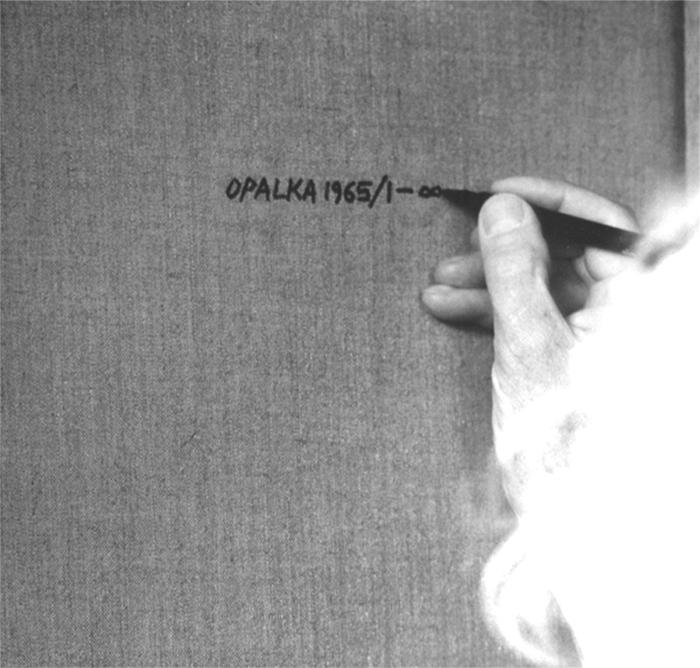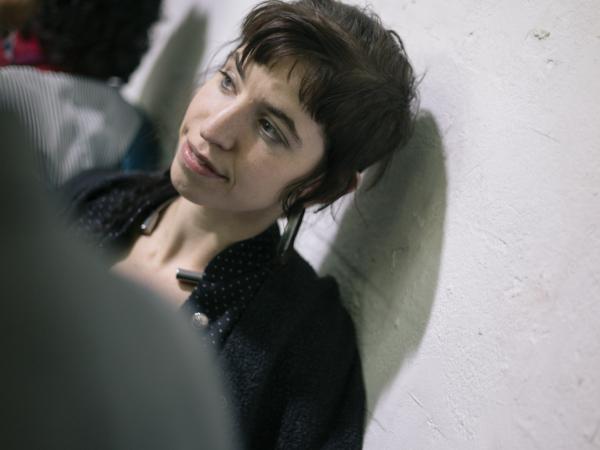One of the most significant artists is Roman Opalka, artist of Polish origin, who in 1965 inaugurated his life project "Opalka 1965/1-∞", a work with which the artist has devoted her life in an attempt to trap him passage of time.
A fascinating process that consists of painting on canvas size always equal 196x135 cm (the size of the door of his studio), with the white color with the numbers increasing rational numbers integers from 1, to infinity.
Opalka could see the magnitude of the work that he had decided to take it
could not understand the real dimensions and facets, nor could imagine the theoretical implications and the whole range of emotional experiences resulting therefrom. He was fascinated and frightened by the immensity of the task he set for himself and above all by the need to carry it out until the very end of his life, leading him to add more features to the whole work.
The draft Opalka might have been even stronger had he remained only a theory, or if it was only developed as a project of a work of art; nevertheless only in its actual implementation and take it forward, really, until the death of the author, it would really have accomplished.
The project has many ramifications in relation with art and especially with life, because never before in the history of art and so absolute and final, life has become work and work life has become.
It is curious to read the words of the same Opalka reminiscent of the first emotions in the approach of his project; his awareness of identity dialectic between his art and his life that would be created was so hard he almost his work did not end shortly after it began, even in conjunction with the first's detail.
The emotional tension had become so powerful that developed a cardiac arrhythmia that forced him to the hospital for a month before he could resume his work.
"I was like a child, enhanced by the emotional tension to learn to walk and take the first steps; It was so hard not to fall, and fall all the more because of the effort. Then earned the safety and without thinking I began to walk around with my mind to other fronts. The fact that we persist in my work has had the same liberating effect. "
Roman Opalka
Subsequently to the bottom surface, initially black, Opalka adds each new one hundredth of a white canvas, so that with the passing of days, you get the impression that the numbers, written from the top-left to right, get confused gradually with the brightening of the canvases. Finished each painting, each called Détail, numbering continues on another canvas. Since 1972 introduces a variant to his ritual every night, after work, take a self-portrait photo in black and white,
always at the same distance from the lens, in the same location, with the same expression, and a recorder fixed his voice while preliminary numbers paintings.
The gradual fading of the canvas (for the increasing amount of white spot in the background) is the fading of a hollow face and worn down by old age.
Opalka in the last years of his life has reached the goal of painting in black on white by him called "Mérite blanc" (white-deserved) and arrive to count the infinite thing in itself impossibilie because if in the painting of the background c 'is also only an infinitesimal amount of black, it can be diluted, but will always be present, not to mention the likelihood of being able to count to infinity. These limits are part of the work itself, first of all the death that justifies it and makes it so striking.
During the exhibition at the Guggenheim in Venice of his Détail was compared with the painting Le Dame Venetian Carpaccio. Both paintings are waiting, the waiting time; in relation to two different ways of representing the irreversible time of painting. Shortly after the artist passed away so concluding his immense work, "Opalka 1965 / 1-5607249".
The Polish artist has influenced a lot of my art project.
He managed to establish an almost mathematical precision in his project and has continued for years and years to extend the concept of time and life, rappresentadola in many shades.













Comments 0
Say something